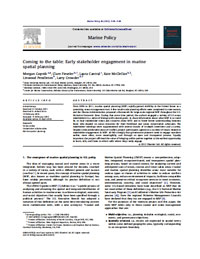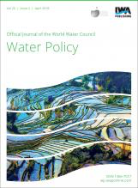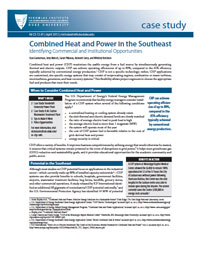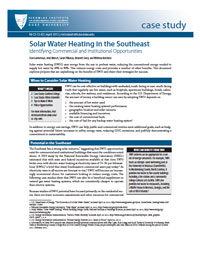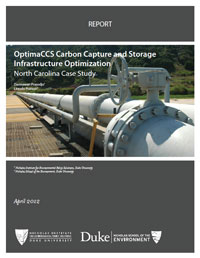Publications
Primer on GHG Regulation of Stationary Sources under the Clean Air Act: Interaction of Tailoring Rule and Proposed NSPS
On March 27, 2012, the U.S. Environmental Protection Agency proposed a performance standard to limit greenhouse gas (GHG) emissions from new fossil-fuel-fired power plants. This primer begins with a background summary of Clean Air Act regulations that control GHG emissions. Subsequent sections discuss the regulation of large stationary sources, such as power plants, refineries, and industrial facilities. Finally, this primer explains the interaction of the proposed new source performance standard (NSPS) with other regulations controlling GHG emissions from large stationary sources.
Environmental Management Needs for Exploration and Exploitation of Deep Sea Minerals
The International Seabed Authority in collaboration with the Government of Fiji and the SOPAC Division of the Secretariat of the Pacific Community held a Workshop on Environmental Management Needs for Exploration and Exploitation of Deep Sea Minerals, in Nadi, Fiji.This initiative reflected the increasing interest in and associated concerns about the potential environmental impacts of deep sea minerals exploration and mining and how competent authorities at the national and international level will regulate this emerging economic development opportunity in a sustainable manner in areas within and beyond national jurisdiction. This document contains the outcomes of the discussions at the workshop.
Why Value the Oceans?
This discussion paper by UNEP (United Nations Environment Programme)/GRID-Arendal and the Nicholas Institute for Environmental Policy Solutions, in collaboration with the UNEP TEEB (The Economics of Ecosystems and Biodiversity) Office and the UNEP Regional Seas Programme, is based on contributions from an international group of experts. It highlights areas of ocean and coastal management for which a better understanding of the economic value of marine ecosystem services could substantially improve the management of critical marine resources; improve governance, regulation, and emerging ocean policy; and provide a better understanding of the potential economic challenges that arise from a rapidly changing ocean environment.
Coming to the Table: Early Stakeholder Engagement in Marine Spatial Planning
From 2009 to 2011, marine spatial planning (MSP) rapidly gained visibility in the United States as a promising ocean management tool. During that same time period, the authors engaged a variety of U.S ocean stakeholders in a series of dialogs with several goals: to share information about what MSP is or could be, to hear stakeholder views and concerns about MSP, and to foster better understanding between those who depend on ocean resources for their livelihood and ocean conservation advocates. The stakeholder meetings were supplemented with several rounds of in-depth interviews and a survey. Despite some predictable areas of conflict, project participants agreed on a number of issues related to stakeholder engagement in MSP: all felt strongly that government planners need to engage outsiders earlier, more often, more meaningfully, and through an open and transparent process. Equally important, the project affirmed the value of bringing unlike parties together at the earliest opportunity to learn, talk, and listen to others with whom they rarely engage.
Freshwater, Climate Change and Adaptation in the Ganges River Basin
Climate change is one of the drivers of change in the Ganges river basin, together with population growth, economic development and water management practices. These changing circumstances have a significant impact on key social and economic sectors of the basin, largely through changes in water quantity, quality and timing of availability. This paper evaluates the impact of water on changing circumstances in three sectors of the Ganges basin: agriculture, ecosystems and energy. Given the inherent interconnectedness of these core sectors and the cross-cutting impact of changing circumstances on water resources, we argue that adaptation should not be viewed as a separate initiative, but rather as a goal and perspective incorporated into every level of planning and decision making. Adaptation to changing circumstances will need to be closely linked to water resource management and will require significant collaboration across the sectors.
Groundwater Quality and Its Health Impact: An Assessment of Dental Fluorosis in Rural Inhabitants of the Main Ethiopian Rift
Increased intake of dietary calcium may be key to addressing widespread dental health problems faced by millions of rural residents in Ethiopia’s remote, poverty-stricken Main Rift Valley, according to a new Duke University-led study published in the journal Environment International. As many as 8 million people living in the valley are estimated to be at risk of dental and skeletal fluorosis as a result of their long-term exposure to high levels of naturally occurring fluoride in the region’s groundwater. Most efforts to combat fluorosis in the region have focused primarily on treating drinking water to reduce its fluoride content. Increasing the amount of calcium in villagers’ diets, or finding alternative sources of drinking water may be necessary in addition to these fluoride-reducing treatments, the study found. Support came from the Duke Global Health Institute and Duke’s Nicholas Institute for Environmental Policy Solutions.
Building Change towards Full Cost Water: Lessons from the Rate Setting Process
To ensure the country's changing water demands and evolving environmental challenges are met, the water industry must find new strategies and partners to map a new way forward. A new paper by the Nicholas Institute for Environmental Policy Solutions highlights the importance of rate setting strategy. By analyzing disparate rate cases, the authors show that common strategies can exist with regard to rate setting procedures no matter how different the utility.
Combined Heat and Power in the Southeast: Identifying Commercial and Institutional Opportunities
Combined heat and power (CHP) maximizes the usable energy from a fuel source by simultaneously generating thermal and electric outputs. CHP can achieve operating efficiencies of up to 80%, compared to the 45% efficiency typically achieved by conventional energy production. This case study examines two successful CHP applications in the Southeast: one at Vanderbilt University in Nashville, Tennessee, and one at the R.M. Clayton Wastewater Treatment Plant in Atlanta, Georgia.
Solar Water Heating in the Southeast: Identifying Commercial and Institutional Opportunities
Solar water heating uses energy from the sun to preheat water, reducing the conventional energy needed to supply hot water by 40 to 80 percent. This reduces energy costs and provides a number of other benefits. This case study examines two successful solar water heating applications in the Southeast, at Guilford College in Greensboro, North Carolina, and at the Hilton Asheville Biltmore Park.
OptimaCCS Carbon Capture and Storage Infrastructure Optimization: North Carolina Case Study
The use of carbon capture and storage (CCS) in the United States will allow coal-fired power generation to remain a major component of the nation’s energy mix while also reducing its carbon emissions. The cost of capturing carbon dioxide (CO2) will affect the deployment of CCS, as will the costs for CO2 pipeline transport and underground injection. Transportation and storage costs can be minimized, however, by optimizing the design of the transport system. This report examines how a software program created at Duke, OptimaCCS, maps out cost-efficient options for overall CCS network design, including pipeline routes, necessary pipe diameters and lengths, efficiencies from using shared pipelines, and the impact of sequestration costs.




